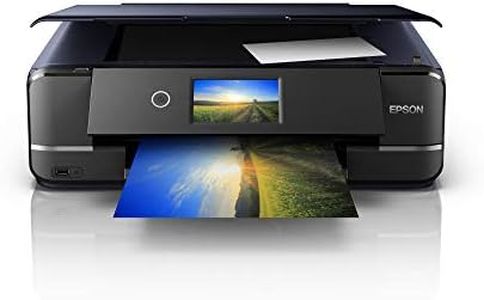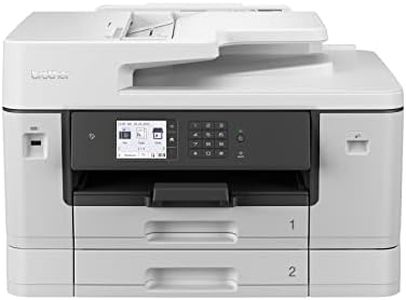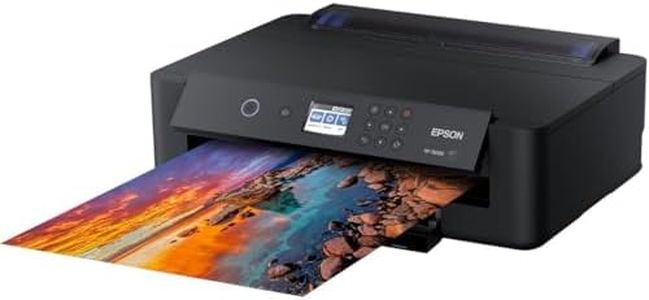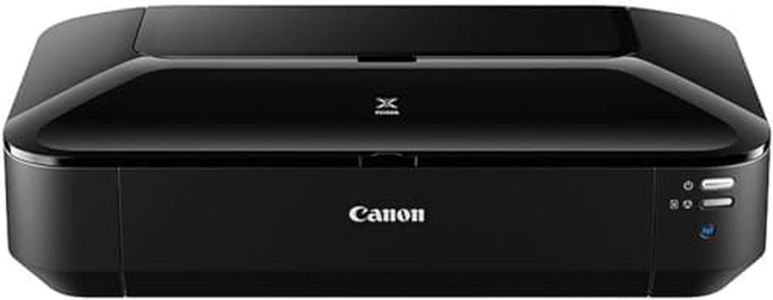We Use CookiesWe use cookies to enhance the security, performance,
functionality and for analytical and promotional activities. By continuing to browse this site you
are agreeing to our privacy policy
5 Best 11x17 Printers
From leading brands and best sellers available on the web.Buying Guide for the Best 11x17 Printers
Choosing an 11x17 printer (sometimes called tabloid or ledger size) is a smart move if you need to print larger documents, like posters, drawings, marketing materials, or architectural plans. The best approach to picking the right one is to clearly define what you'll use it for most—are you focused on vivid color images, fast output, or occasional large-format prints? Once you know your needs, you can look at important specifications that will help you compare different printers and find the perfect fit. Always reflect on how each feature matches up with your tasks at home, in your studio, or at work.Print Technology (Inkjet vs. Laser)Print technology refers to how the printer puts images and text onto paper. Inkjet printers use liquid ink and are generally better at handling bright colors, detailed pictures, and a wide range of paper types. They’re often preferred for creative projects or photos. Laser printers use powdered toner and shine when it comes to printing lots of pages quickly and with sharp text, making them great for office documents. Decide between them based on what you print—high-quality images and variety point toward inkjet, while speed and heavy text use point toward laser.
Print ResolutionPrint resolution, measured in dots per inch (DPI), tells you how sharp and detailed your prints will look. Higher DPI means crisper lines and more vibrant images, which is important for photos or graphics-heavy documents. Lower DPI (up to 600x600) is fine for most text documents, mid-range (up to 1200x1200) works well for presentations and diagrams, and high (upwards of 2400x1200) suits those needing gallery-level quality. Pick the level that matches your need for image detail versus just basic office use.
Print Speed (Pages Per Minute, PPM)Print speed shows how fast the printer can produce documents, often shown as pages per minute (PPM). A faster printer saves time when you print in high volumes, but may not be as crucial for occasional jobs. Typical ranges for 11x17 printers can vary—up to 10 PPM is okay for light home use, 10-20 PPM suits small businesses or shared offices, and higher rates work best if you’re running a busy print environment. Think about your patience and workload when deciding how fast you need your printer to be.
Paper Handling and CapacityPaper handling includes how many sheets a printer can take at once and whether it can automatically feed and print on both sides (duplexing). If you deal with many big documents or print regularly, choose a printer with a larger tray (over 250 sheets) and automatic duplexing. Smaller trays and manual feeding are okay for light, occasional jobs. Also, check how easy it is to switch between different paper sizes and types. Match these features to how frequently you print and how much hassle you’re willing to accept.
Connectivity OptionsConnectivity is all about how you hook up the printer to your devices. Common options include USB, Ethernet (for wired networking), and wireless features like Wi-Fi and mobile printing (AirPrint, Google Cloud Print, etc). Wireless is great for sharing the printer among several people and for printing from phones and tablets, while wired connections usually offer faster and more stable performance for a dedicated workstation. Pick what works best in your space and with your other devices.
Size and Space Requirements11x17 printers are often bulkier than standard printers due to their need to handle large paper. Before you buy, check the printer’s physical dimensions and be sure you have enough desk or floor space, especially if you work in a small office or home. Some models are more compact than others, so balance large-size capability with your actual available space.
Cost of Consumables (Ink or Toner)The ongoing expense of ink or toner can add up over time. Some printers have cartridges that are cheaper initially but run out quickly, while others offer higher-yield cartridges that, though pricier upfront, last much longer. Check pages-per-cartridge estimates and read about real-world experiences. If you print a lot, going for a model with lower cost per page and easy-to-find refills will save stress and money in the long run.




